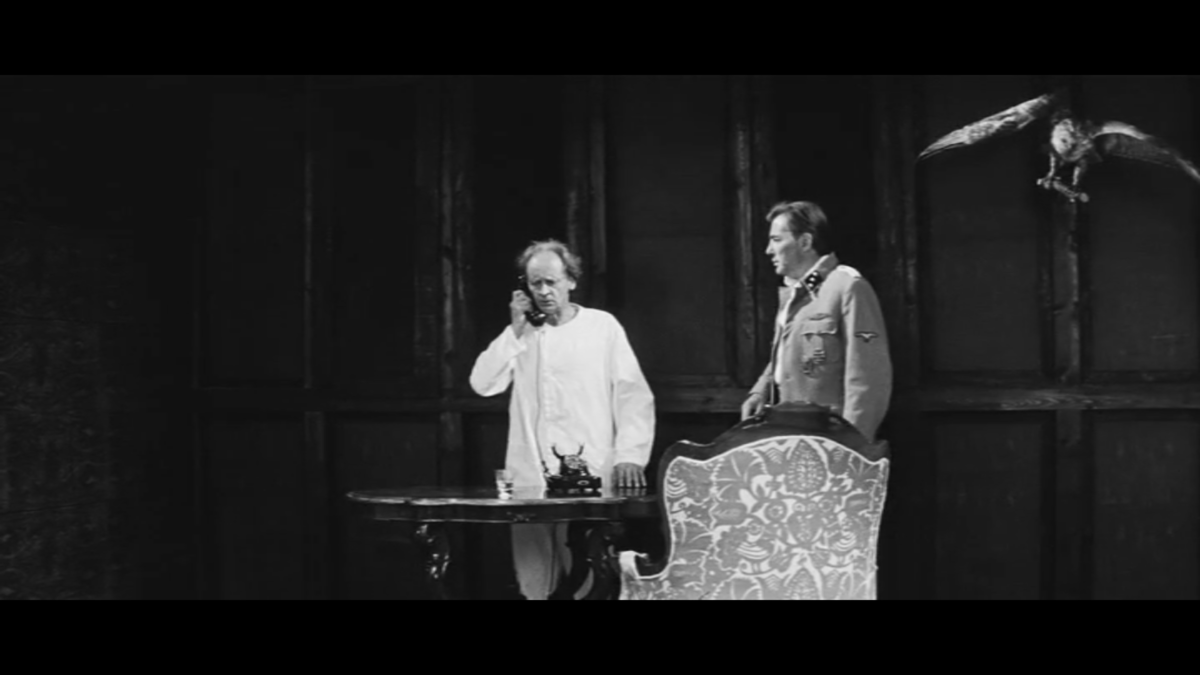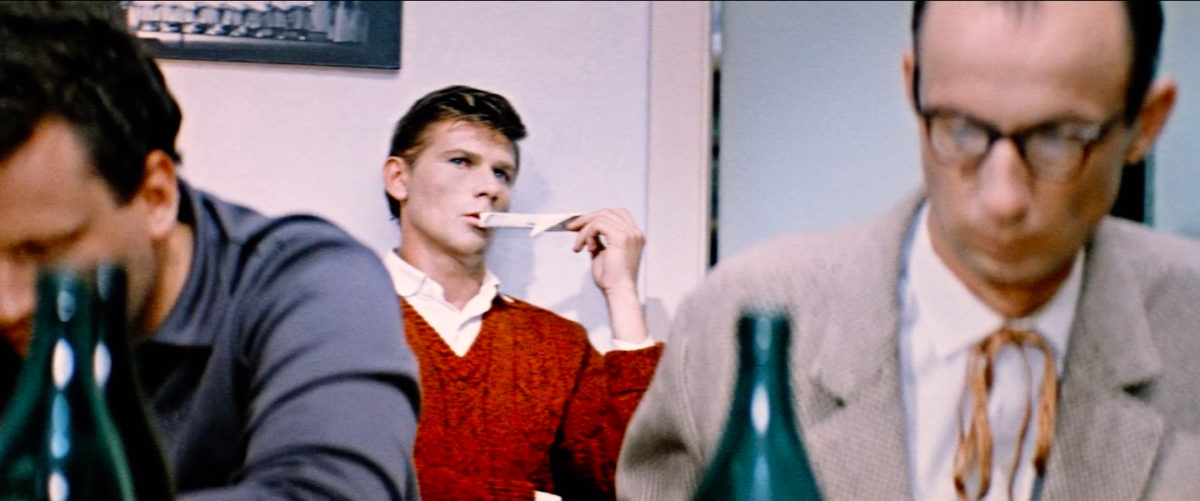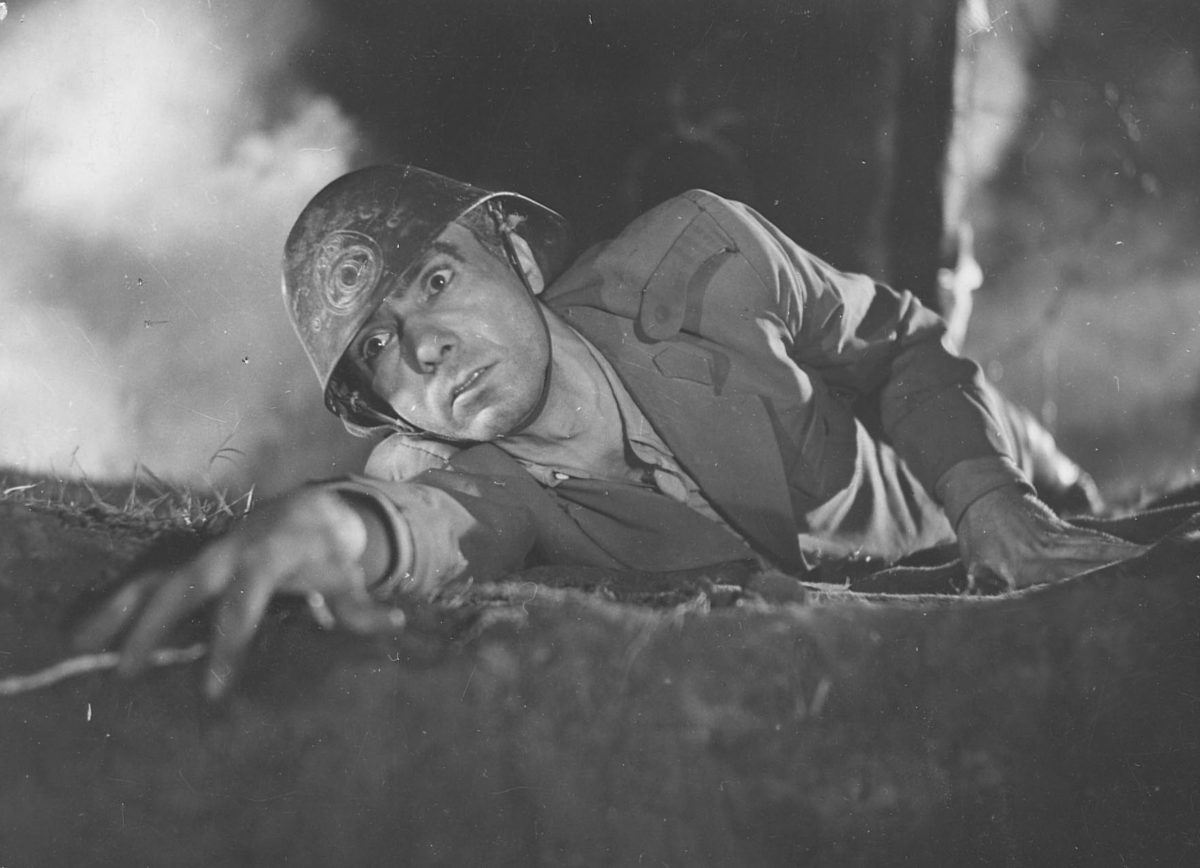1917 is the year of its decade that stands out to the contemporary cinéaste—commemorated by watershed achievements like The End of St. Petersburg (Vsevolod Pudovkin, 1927) and October: Ten Days That Shook the World (Sergei Eisenstein, 1927) and the eponymous shit bomb dropped on multiplexes worldwide by Sam Mendes last year—but, of ultimately far greater import for the remaining century of European cinema was 1918. Not because of any specific films made or industry conditions transformed, but because in the wake of both the Russian Revolution and the end of World War I that heralded a global recognition of nations’ right to self-determination, over a dozen countries that went on to establish themselves as significant homes for film production declared their independence. ‘In Focus: 100-Year Olds’, a centennial retrospective that I caught at the 2018 Tallinn Black Nights Film Festival (in its native Estonian, Pimedate Ööde Filmifestival—or PÖFF for short), honored eleven of these national cinemas: Austria, the twofer of Czechoslovakia, Hungary, Estonia, Latvia, Lithuania, Poland, Romania, Ukraine, and Georgia. Iceland was thrown in too, for good measure.
Within an hour of touching down in Tallinn, I scurried into the two-screen art house deep in the Solaris Centre mall to get my feet wet with the Romanian entry. On the heels of The Apple (La mere, 1953), a short film that counted toward their graduations from the Institute of Theatre and Film I.L. Caragiale (IATC), Life Does Not ForgiveWhile Life Does Not Forgive is the literal translation, the film also went by the English title The Mist Is Lifting. (Viaţa nu iartă, completed in 1957, released in 1960) was the second joint effort (but first feature) by Iulian Mihu and Manole Marcus, who each went on to solo direct films in the decades that followed. Based on a novel by Alexandru Sahia, whose name also graced a production company specializing in documentary short subjects, Life Does Not Forgive casts a retrospective gaze on World War I through the pane of World War II. The year is 1943, the opening text announces, and “somewhere on the front, a man was dying.” A young intellectual who had already spent much of his life scrutinizing Romania’s recent past, Ștefan recalls from the battlefield a series of episodes in which the perils of war chiseled away at his worldview. First, we see Ștefan some years earlier paying his respects to his father’s gravesite on a day of WWI commemoration. He solemnly reveals to a veteran who has also arrived at the cemetery before the crowds that his father survived the war but by no means made it out unscathed. A second flashback, to a decade or so earlier, depicts the psychological damage wrought on Ștefan’s father, Vladimir, at a holiday party where he catatonically sits alone while the guests around him make merry. This expressionistic staging of fractured domestic life swells as Ștefan sneaks upstairs to look at a photograph of his father at the warfront and Vladimir appears suddenly, as if out of a Murnauian wave of fog, to smack the image of out of his hands. That Vladimir was certifiably unwell is confirmed in a third temporal leap (this one in between the previous two), wherein Ștefan visits the man at a sanatorium to which he’s been sent with many others suffering from PTSD. A doctor suggests that the same photograph we witnessed Ștefan trying to catch a glimpse of as a child may hold a clue as to what transpired for his father at the warfront. Bearing this fated image of Vladimir with two of his comrades in arms at the graveyard, Ștefan finally elicits from his interlocutor (who, it rather improbably turns out, knew Vladimir intimately) vivid memories of life in the barracks. Directors Mihu and Marcus brilliantly convey the disturbance that the veteran’s story of his and Vladimir’s shared trauma inflicts upon Ștefan through a wriggling tracking shot of him pacing through a train car on the way home from the memorial service. At last overturning the film’s constant lurching toward a clearer view of familial and national history, the final sequences demonstrate how rapidly Romania’s entrance into WWII spelled the demise of young people like Ștefan, who were conscripted to fight against the same Soviet bloc that the country would align itself with in the immediate aftermath of the war.
Completely marginalized upon its release, Life Does Not Forgive is now widely recognized by Romanian scholars as a watershed moment for the national cinema, representing a departure from the plain-stated tenor of social realism by boldly adopting a modernist structure to penetrate a historical topic rarely treated onscreen with appropriate depth.See Călin Căliman (2017) Istora filmului românesc (1897-2017), Bucharest: EuroPress Group

A similar case could be made for the contribution that Madness (Hullumeelsus, 1969, Kaljo Kiisk) makes to its own national cinema. The Estonian film opens with an SS squadron marching through a town already marked as “Jew-free.” Marxists, Romanis, and insurgents have already been wiped out too, the narrator tells us, and now the time has come for them to exterminate the mentally ill. It’s not every day one sees a modernist film about a looney bin, much less one wherein a Sturmbahnführer putters around to a light mid-century classical score wondering whether or not he should order their mass murder or not. At times, the writing falls short—such as an awkward wink or two to the viewer about the obvious absurdity of onscreen situations, or the likely cliché that the ostensible crazies exhibit a good deal more sense than the authority figures—but Kiisk’s mastery of character development, reflecting his parallel career as an actor, combines with a strong visual strategy. For much of the film, the camera itself feels inebriated, alternately spinning around the rooms of the sanatorium and glomming onto the actors’ faces. This logic of stupor reaches a poetic apex in the final minutes of the film that not even the off-putting final shot can totally erase.
The two other Baltic films shared with Madness an expressionistic style that, rooted in a freewheeling cinematography and playful use of music, position them even closer to the New Wave movements that were sweeping across Europe contemporaneously. In her illuminating introduction to the Lithuanian offering The Beauty (Gražuolė, 1969, dir. Arūnas Žebriūnas), professor Lina Kaminskaitė-Jančorienė noted that the film’s urban setting—very unusual for Lithuanian cinema at that time—exemplifies the influence of neighboring national cinemas on Žebriūnas, especially Poland’s. Though divergent in many other ways, the Latvian film in the series also stood out for its unexpected representation of a city: Four White Shirts (Četri baltic krekli, 1967, dir. Rolands Kalninš) depicts Riga as a jungle gym for young lovers and all-around rabble-rousers, which is perhaps one reason it was met with a stone-cold reception from Soviet authorities who banned the film for twenty years. With dazzling bird’s-eye view shots of their two metropolises, these films place within their environments young people coming to grips with the unspoken rules and regulations of society.
The Beauty is a startling ode to childhood steered by Inga, a kindergartener being raised by a single mother who is very caring but also quite preoccupied with her work as a writer. In one of several playful conversations between the two, Inga muses that airplanes make it possible to visit anywhere in the world with great speed and ease. “Yes,” the mother concedes, “but what difference does it make? You cannot escape yourself, and happy people feel good wherever they are.” This tension between the overwhelming wonder of modernity and the imperative to accept one’s lot in life serves as The Beauty’s key terrain, the latter especially fecund as the film examines how women grapple with physical appearance. The eponymous “beauty” is a schoolyard game Inga and her friends take part in, but it’s also a question that floats around in her frank conversations with her mother and her wanderings around the city, as in a very memorable beauty parlor scene. Like his protagonist, Žebriūnas demonstrates as much interest in these questions as in the simple pleasures of a life spent engaging with nature, music, movement, and less tangible elements of grace.

Four White Shirts, which was featured in Cannes Classics 2018, starts off with a tone as light as a game of hopscotch but gradually subsides into melodrama as the film’s sobering look at state censorship and the exhausting hurdles it placed for artists takes hold. In the eponymous pop song, the main character Cēzars Kalniņš sings, “If a man has four white shirts/he can go through life worry-free/This song is not about shirts/It’s about consciousness.” Kalniņš (named after the film’s writer-director) makes an ideological misstep with these lyrics that will cost him his prospective career as a musician in the not-so-swinging ‘60s of Soviet-controlled Latvia. Despite initial appearances, the song is not about humility or being content with a Spartan way of life: it’s actually about how happiness comes from having the freedom to express oneself, to wear different hats at different points in life—what could be more dangerous than that for maintaining the status quo in day-to-day Communist society? While the film spares no verisimilitude in its riotous, excruciatingly plausible scenes of censorship meetings, it also leaves room for live performances and other moments of joy in the bandleader’s life that serve as a much-needed counterpoint. Ironically, the film itself wound up facing heavy opposition and was banned until 1986. What’s more, this was neither the first nor last time Rolands Kalnins had his films shunted by authorities. Another of his films, Stone and Flinders (1966), stayed behind lock and key for two decades, while censors shut down a third project, Maritime Climate, mid-production in 1974, and disposed of most of the footage.See Ieva Pitruka (2018) ‘Rolands Kalninš: I Am Frivolous’ in Roland Kalniņš’ Arena, ed. Kristīne Matīsa and Agnese Zeltiņa, Riga: Neputns, 15. Like the two completed-but-banned features, Maritime Climate did see the light of day over a decade after its production, in a severely truncated, 40-minute cut. For more information: http://www.kinofestivalis.lt/en/films/Maritime-Climate In fact, it’s quite remarkable that he managed to direct nine other features between Four White Shirts and the dismantlement of the Soviet Union.
In the West at least, filmmakers tend to be the ones who get all the credit for smuggling subversive content within ostensibly innocuous works, but cinemas of the Soviet bloc compel us to ponder just how many hands it took to construct any kind of meaning on the fringes of what was bureaucratically acceptable. This is something even a master like Andrzej Wajda readily acknowledged, writing for instance about the lead in his Ashes and Diamonds (1958): “there is no way anyone can censor [Zbigniew] Cybulski’s performance. It is precisely the way he is that contains that certain ‘something’ representing political obscenity.”Cited in Paul Coates (2005) The Red and the White: The Cinema of People’s Poland, London: Wallflower, 31. Indeed, Cybulski’s role in that film called for the agility of a tightrope walker. Maciek, a Polish Home Army soldier vested with one last mission on VE Day, is both a tragic hero and a pathetic holdover from an era of prideful nationalism. Given that the Home Army had combatted against the same Russian forces to which postwar Poland was beholden, the charisma that Cybulski lends to Maciek ran no small risk of vexing Soviet censors. Film scholar Paul Coates writes that Cybulski’s next major role, in Wojciech Has’ 1962 feature How to Be Loved (the Polish inclusion in this retrospective), was conceived of as a direct response to the part of Maciek in Ashes and Diamonds. Indeed, in both films Cybulski plays a rebel whose sense of patriotic duty and love for a woman become incompossible. Couching the story of Wiktor Rawicz—an actor (self-reflexively playing up on the iconography of Cybulski’s earlier role) turned resistance fighter who hides out from the Gestapo in his lover Felicja’s apartment—in the war-time memories that come flooding into Felicja’s mind on her maiden plane ride almost two decades later, How to Be Loved is a master-class in how the passage of time only makes scarring bulge. Like all the great films in ‘100-Year-Olds’, its accomplishment strikes an even greater impact in a post-Soviet era wherein decades of pervasive suppression are continually coming to light.
The impact that political regimes have on narrative films made under their aegises is meant, in most cases, to be invisible. If a movie serves a propagandistic purpose, directors and state censors alike might find themselves in uncommon agreement that this should go undetected to audiences to the extent possible. Are we retroactively contributing to the erasure of such traces of the political when we sample a potpourri of national cinemas in the flattening, museum-like space of the film festival? Sure. But maybe, in wresting these films out of their proper context, we’re also committing a political act of our own: a direct democratization of aesthetics.
